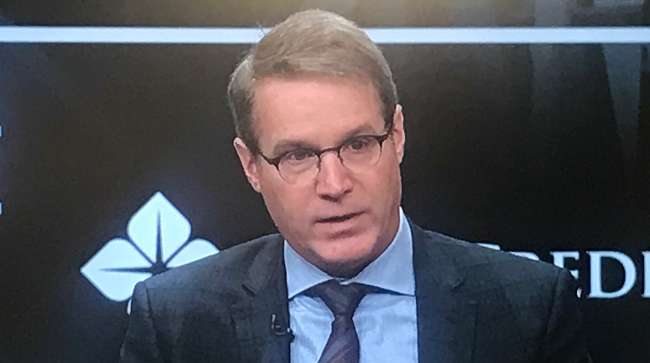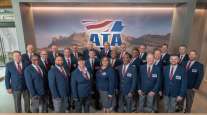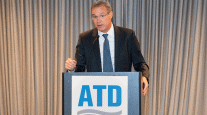Senior Reporter
ATA President Chris Spear Critical of Trucking Omission in Autonomous-Vehicle Bills

WASHINGTON — Legislation before Congress that would establish a regulatory landscape for autonomous cars while not addressing trucks does not reflect the realities of the driving landscape and will fall short on safety, the president of American Trucking Associations said Dec. 6.
“It just makes absolutely no sense why you wouldn’t want to build a framework that’s seamless, across the board, applies to all vehicles. We all share the road,” said ATA President Chris Spear, one of several participants in a panel discussion about infrastructure hosted by CQ Roll Call at the Newseum.
“Build a framework that makes sense for everybody,” Spear said. “If you’re really serious about safety. If you really want to lower the number of fatalities from 40,000 down to zero, you need connectivity. You need cars. You need trucks talking to one another … That’s just fundamental.”
ATA led a push on Capitol Hill aimed at trying to persuade lawmakers to include trucking-related provisions in the self-driving vehicle bills. Autonomous systems in trucks eventually would lead to an industry in which commercial vehicles operate via “driver-assist” and not “driverless,” Spear said.
ATA President Spear: Emphasis on autonomous discussions for commercial vehicles centers more on driver-assist, and not driverless #InfrastructureDecoded pic.twitter.com/1cvnmxGoFp — Eugene Mulero (@eugenemulero) December 6, 2017
House lawmakers passed their car-centric bill in September. A Senate committee followed by approving a version in October that also focused on cars. Floor consideration in the Senate has yet to be scheduled. Disagreements about consumer protections and safety parameters have stalled the bill’s movement in the Senate.
The car-centric bills marked a victory for a consortium of automakers and software firms that have called on federal policymakers to facilitate the deployment of autonomous technology. The major car companies have recently announced plans to test autonomous models in the next few years.
Earlier this year, the U.S. Department of Transportation updated guidance on voluntary automated commercial and passenger vehicles for manufacturers and states that intend to deploy self-driving vehicles.
Trucking firms seeking to adopt autonomous technologies are pressing ahead with trial runs around the country. For instance, last year a self-driving truck from Uber Technologies Inc., hauled Budweiser beer on Interstate 25 in Colorado.
Meanwhile, a White House funding proposal for addressing the nation’s road infrastructure needs is slated to arrive next year, said D.J. Gribbin, special assistant to the president for infrastructure policy. That timing is in line with earlier indications that such a plan would follow the legislation on tax reform, which is now underway.
A $200 billion ask in federal funds will be used to incentivize $800 billion in private sector investments, Gribbin explained, noting the funding would come from cuts to existing programs. The White House also plans to urge states to pick up a greater funding tab for transportation.
The federal highway fund relies on revenue from the gas and diesel tax to help states pay for infrastructure projects. President Donald Trump has not ruled out increasing taxes on fuel as a way to boost the Highway Trust Fund. As Gribbin put it, the White House is “neutral” on boosting the tax.
“When you talk about the grand ideas, whether it’s tax reform, or health care, or infrastructure, that’s all easy. Then we talk about pay-fors. Then it becomes strictly harder,” Gribbin said.
Several key policymakers have not been excited about Trump’s call for relying on private capital over 10 years to fix the country’s transportation network. Oregon Rep. Peter DeFazio, the top Democrat on the transportation panel in the House, called the suggestion that states boost their transportation budgets “classic devolution.” The term is the concept of devolving federal responsibilities to enhance states’ roles.
“Vast stretches of the interstate, the road surface itself and the bridges, do not carry very large volumes of traffic, but they are essential to one or another state or a number of communities in that state,” DeFazio said, following Gribbin’s keynote remarks.
“[Gribbin] is now saying, ‘Oh, that’s the state’s responsibility.’ I mean that’s back to where we were in 1956,” DeFazio added. “Maybe one state will have the money to make the investment, and the next state won’t.”





